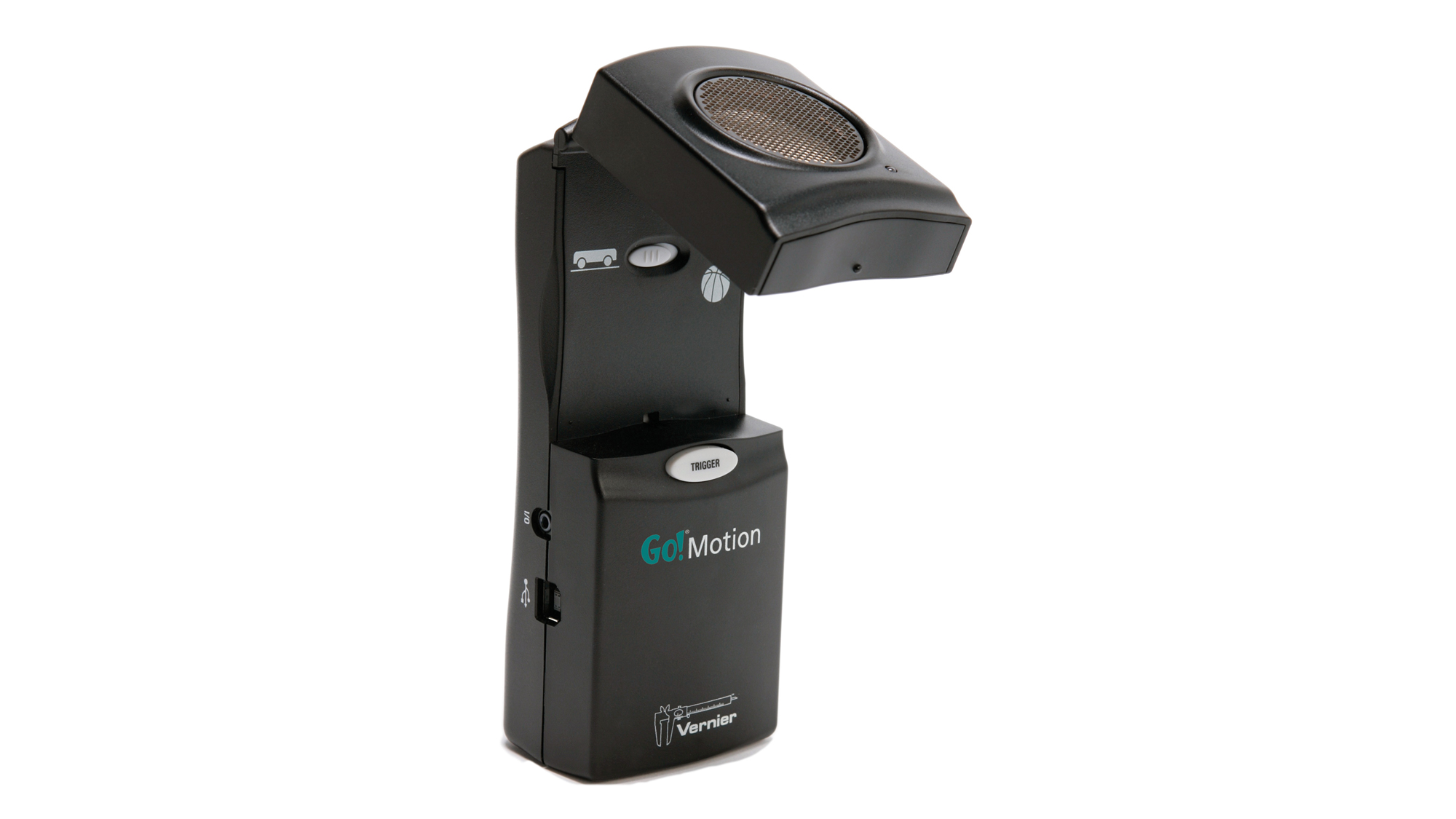Troubleshooting
- Primary test: When you start data collection, do you hear a clicking from the Go!Motion? If not, the sensor may be defective. Sometimes the switch on the inside of the Go!Motion gets stuck between the two positions. Try vigorously flipping the switch back and forth.
- Secondary test: If the Go!Motion is not working, the cable could be malfunctioning. Try a cable from a working unit.
- Tertiary test: To test accuracy, find a wall with no desks, chairs, doors, or other obstructions within a 2 m field. Hold the Go!Motion in your hand, 0.5 m from the wall with the gold disc pointing directly at the wall. Do you get the expected 0.5 m reading? Back off to 1.0 m. Do you get 1.0 m? Back farther off to 1.5 m. Do you get 1.5 m?
- Quaternary test: Motion Detectors use ultrasound to measure position. Other sources of ultrasound may be interfering with the signal. Those sources include air tracks, CRT computer monitors, fluorescent lights, and power distribution panels. Identifying these sources can be challenging. You may have to resort to moving the Go!Motion away from interfering equipment. In the case of noisy fluorescent lights, turn them off (but we rarely see this problem).
The LED on the Go!Motion is a useful troubleshooting tool. When working correctly, the LED on the Go!Motion is green. If your LED is not green, see The LED on my Go! device or LabQuest Mini is not green. What does that mean?
Additional Troubleshooting
For additional tips related to using motion detectors, see Motion Detector Troubleshooting and FAQs
- Do Go! devices work with the LabQuest App?
- Can you create new match files for Logger Pro?
- Should I use a photogate or a Motion Detector?
- Will your Motion Detector show the speed of a (car, baseball, racquetball)?
- Why am I getting Motion Detector readings that are noisy or max out at a certain distance?
- Why don't I get a freefall acceleration value of 9.8 m/s2 when using a Motion Detector?
- My Motion Detector is not collecting data with DataMate and LabPro.
- How do I improve the results from a Motion Detector with an air track?
- A mass fell into my Motion Detector and dented the screen. Can the gold mesh screen be repaired?
- How do I attach the Motion Detector bracket to the Vernier track?
- Which motion detector should I buy? What are the differences between them?
- Which motion detector should I get to use with my TI Calculator?
- Should I buy CBR 2, Go!Motion, or Go Direct Motion to work with Texas Instruments calculators, computers, and Chromebooks?
Specifications
- ultrasound frequency: 50 kHz
- resolution: 1 mm
- accuracy: 2 mm
- range: 0.15 m to 6 m
- speed of ultrasound used to calculate distance: 343 m/s *
- power: 51 mA while running
* The Go!Motion has a built-in temperature sensor and applies a correction to the speed of sound automatically.
Calibration
There is no need to calibrate the Go!Motion.
Related Products
- Motion Detector Clamp (
MD-CLAMP ) - Digital Sensor Cable (
MDC-BTD ) - Go!Motion to Calculator Mini-USB port (
TI-GMUSB ) - Digital Extension Cable (
EXT-BTD ) - Motion Detector Bracket (
DTS-MDB ) - Motion Detector (
MD-BTD ) - CBR 2 (
CBR2 ) - Go Direct® Motion Detector (
GDX-MD )

